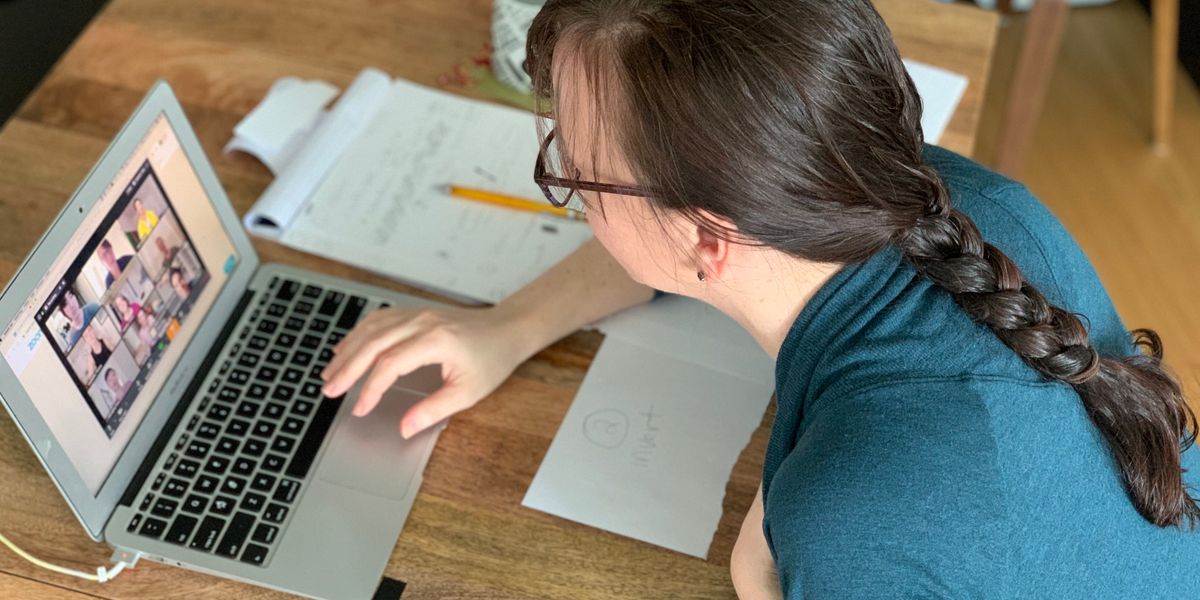Learning the Principles of Choreography, Alone But Together
Choreography may be the most social art. A composer can write music alone at her piano; a painter has his paints. But dance requires human bodies sharing space and physical contact, neither of which is possible at the moment. And yet the imagination is a powerful tool. As the choreographer Jessica Lang recently told a group of seven American Ballet Theatre dancers in a Zoom session, “We may not be together, but we get to use our imaginations.”
The dancers’ faces popped up on the screen, each framed by his or her current living arrangements. Some were sitting in living rooms, between the couch and the TV. Others in the kitchen, or in a bedroom. For an hour and a half, they talked, listened, moved.
The session was part of a new initiative connected to ABT Incubator, a choreographic workshop started by the dancer David Hallberg two years ago. That first year, the dancers were simply given time and space to create a dance. Lang, who has been involved since the beginning of the Incubator, felt this wasn’t enough. She suggested that it might be useful to have a forum in which the dancers could be exposed to principles that underpin the creative process.
So this year, ABT introduced a preparatory workshop, ahead of the creation period in the fall. Then COVID-19 happened, and suddenly everyone was stuck at home. Like so much else in people’s lives, the sessions went online. The dancers meet up with Lang on Zoom for an hour and half every Wednesday, for a total of five weeks.
On the day I listened in, Lang started things with a mirroring exercise. The dancers were paired off. Across my computer screen, as if arranged on a Tic Tac Toe board, they followed each other’s movements, sometimes straying away from each other, only to return. The atmosphere in the online “room” was heavy; the dancers had learned earlier in the day that the company’s spring season would be canceled. They didn’t talk about it, but the subtext was there.
 The participants included Zhong-Jing Fang, Luciana Paris, Cassandra Trenary, Luigi Crispino, Sung Woo Han, Melvin Lawovi and Joseph Markey
The participants included Zhong-Jing Fang, Luciana Paris, Cassandra Trenary, Luigi Crispino, Sung Woo Han, Melvin Lawovi and Joseph Markey
Courtesy Lang
“It felt therapeutic to get in a groove where you don’t know who’s leading and who’s following,” Cassandra Trenary, a soloist, said after they had finished the exercise. “I enjoyed the togetherness,” another dancer added. The week before, two dancers had broken into tears while mirroring each other’s movements.
One of the ideas Lang is imparting is that there are a variety of ways to generate movement. The homework for this particular session consisted of developing a phrase in response to a quote from the American political journalist Norman Cousins: “All things are possible, once enough human beings realize that the whole of the human future is at stake.”
Each dancer came up with a response, which they performed for the others. They were remarkably dissimilar. One was declamatory, almost angry; another delicate and soft; and yet another fluid and rippling. “It’s almost as if you had no joints,” one of the dancers commented on the latter. Some of the phrases took up space, some could be performed virtually in place.
Next, Lang asked the dancers to execute the phrases either in retrograde or by inverting them. She explained the difference: “Retrograde is like rewinding a tape, working all the way back from the end to the beginning. And inversion is inside out, so what was down is up, what was front is back, and vice versa.”
The dancers broke off to work on their own for 10 minutes, as Lang played a recording of a Vivaldi violin concerto. The results were surprising. The dancers had to fight physical habits, move backwards, face away from the “audience,” do things that were uncomfortable. “I like the struggle,” said soloist Luciana Paris, laughing. Some of the dancers preferred the new version to the original. “It’s about finding those ‘woah’ moments,” Lang told them. “You never know where they’ll come from.”
Later I spoke with Luigi Crispino, a member of ABT’s corps de ballet. This is his first attempt at choreography. He talked about his sources of inspiration. “Whenever I hear music,” he said, “I have an image of people dancing in my head.” Growing up in Naples, Italy, he was constantly surrounded by art. “Italian painting and sculpture has this incredible sense of movement and proportion. I’m inspired by that.”
These conversations and experiments will lead to a final movement study, which the dancers are developing on their own. In their last session, they’ll perform their pieces for each other. For now, they’ll have to be solos. But at least in this online space, they can be together.




